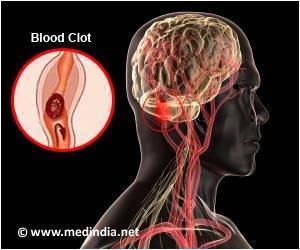Science fiction concept of instant wound healing may soon make its way into reality with plasma medicine/plasma technology by using plasma liquid models.
- Instant wound healing remains a show-stealer in different science-fiction movies
- Scientists now harness cutting-edge research to formulate a new way of wound healing
- Plasma medicine is found to increase the rate of wound healing, thereby curating a new era of medicine
Read More..
Let’s Understand Matter!
Our universe is made up of matter and energy. Matter is a material that you can touch whereas energy is one that can be felt. Neither matter nor energy can be created or be destroyed but can be used in different forms. The basic subatomic particles of an atom are protons, electrons, and neutrons. However, there are several other subatomic particles inside the atom. Matter can exist as solid, liquid, gas, and plasma. Whereas energy has the capacity to move matter and make it work.Plasma is regarded as the fourth state of matter. It exists in the form of a cloud of high-energy charged particles (that includes ions, electrons, and neutral molecules).
Hence, exploring the interaction of low-temperature plasma augments its novel application in diverse areas like nanomaterials, medicine, and environmental remediation.
Our blood too has a component called plasma this is the light yellow liquid portion of your blood that constitutes 55% of the total blood. This plasma is not to be confused with the plasma of matter.
At low temperatures, the electrons are held as the primary energy source to drive specific targeted reactions.
Plasma Medicine — A Sci-Fi?
The study states that the rate of wound healing may also be increased by plasma medicine where low-temperature plasmas are utilized to alter or sterilize heat-sensitive tissue. Although their application had remained out of reach for the scientific world so far, the study team has harnessed it to present a new era of technology.To further decode the unpredicted plasma-liquid models, the team is trying to analyze the transportation of electrons (subatomic particles as every matter is made up of atoms) into and within liquids (electron cross-sections in liquid).
This is explored using a liquid micro jet (just 15 micrometers in diameter) in a Flinders University vacuum chamber lab through a simulation of a fundamentally novel approach.
“Due to the high standards required in medical applications, developing our understanding of electron transport into and within liquids is critical for enhancing predictive power of plasma-liquid models,” says Flinders University Professor Michael Brunger.
New Era of Technology
The study model was developed using machine learning and Monte Carlo training data. The scientific team developed the Monte Carlo simulation for studying the transport of electrons and positrons (subatomic particles) through various mediums.“The method allowed us to reasonably predict individual and two simultaneous electron scattering cross-sections which lays the foundation for a prediction of full, self-consistent cross-section sets in future studies,” says Physics Researcher Dale Muccignat, a PhD candidate of James Cook University.
Hence, this novel technology remains a gateway to exploring the insightful prospects of modern medicine and thereby enhancing health services.
References :
- Muccignat, D. L., Stokes, P., Cocks, D., Gascooke, J., Jones, D., Brunger, M., & White, R. (2022). Simulating the feasibility of using liquid micro-jets for determining electron–liquid scattering cross-sections. International Journal of Molecular Sciences, 23, 3354. - (https://doi.org/10.3390/ijms23063354)
- Toward plasma medicine: Experimental technique uses a liquid micro jet to understand electron transport - (https://phys.org/news/2022-04-plasma-medicine-experimental-technique-liquid.html)
- Facts about plasma - (https://www.urmc.rochester.edu/encyclopedia/content.aspx?ContentTypeID=160&ContentID=37#:~:text=Plasma%20is%20the%20largest%20part,carries%20water%2C%20salts%20and%20enzymes.)
Source-Medindia













